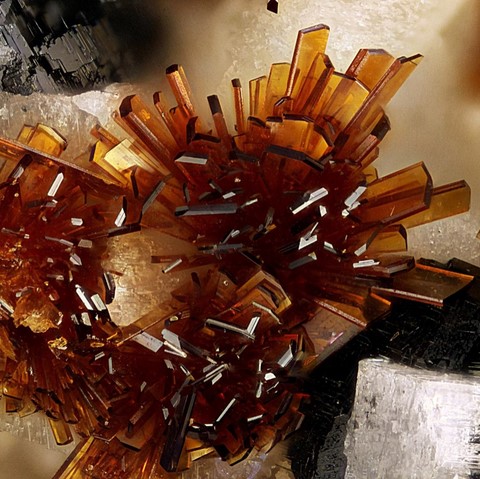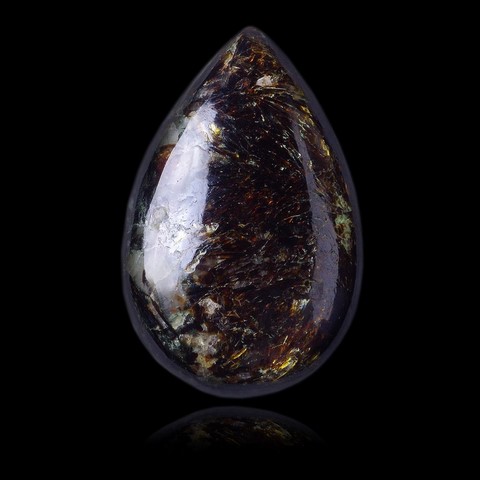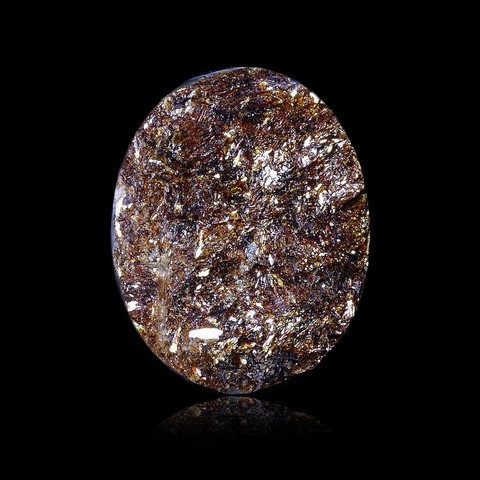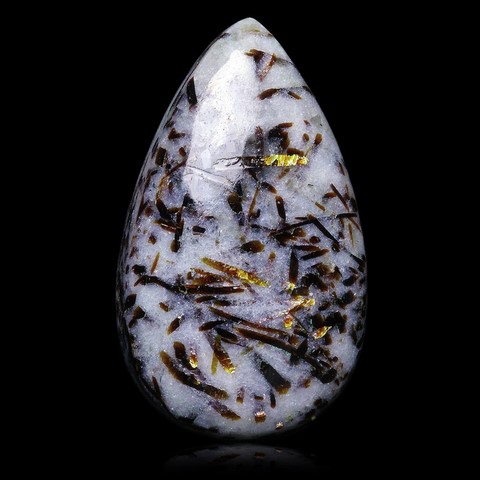ASTROPHYLLITE
Class : Silicates
Subclass : Inosilicates
Crystal system : Triclinic
Chemistry : (K,Na)3 (Fe,Mn)7 Ti2Si8O24 (O,OH)7
Rarity : Uncommon
Astrophillite is a complex silicate of iron, potassium and titanium in which iron can be completely replaced by manganese, forming a continuous series with kupletskite ; titanium can also be substituted by niobium or zirconium. It takes its name from the Greek astron (star) and phullon (leaf) because of its foliated look and brilliant luster. It is a classic silicate of alkaline rocks, mainly sodalite and nepheline syenites and their pegmatites, more rarely fenites. It accompanies sodalite, nepheline and aegyrine. Astrophyllite resembles a brown biotite : the crystals are usually lamellar with hexagonal or rhombic contours, frequently united in radiating aggregates, with a perfect basal cleavage. The color is brown, sometimes brown-yellow. Unlike micas, astrophyllite crystals are brittle and non-flexible. It is a mineral that can be cut in cabochon for jewelery.
Astrophyllite in the World
Astrophyllite in France
In France, astrophyllite is present in the alkaline granites of southern Corsica (Evisa, near Porto).
Fakes and scams :
No fake inventories for this mineral species.
Hardness : 3
Density : 3.2 to 3.4
Fracture : Irregular
Streak : Brown
TP : Opaque to translucent
IR : 1.680 to 1.730
Birefringence : 0.050
Pleochroism : Weak
Fluorescence : None
Solubility : Hydrofluoric acid
Magnetism : Paramagnetic
Radioactivity : None





